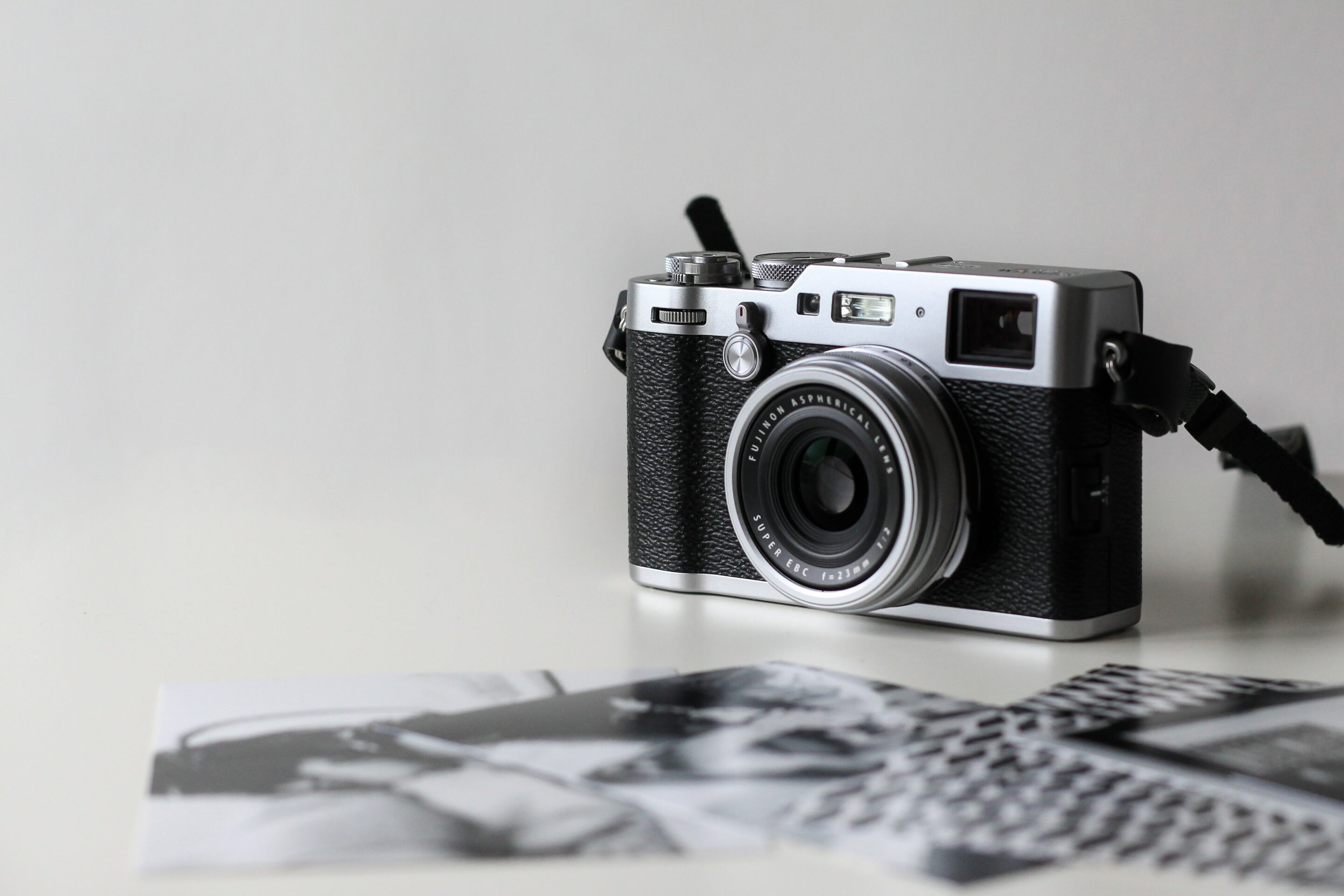Starting a business in photography can be a rewarding and lucrative career path, but it requires careful planning and preparation. In this ultimate guide, we’ll take you through the essential steps of how to start a business in photography, including choosing your niche, registering your business, investing in equipment, creating portfolios, marketing your services effectively, managing your finances well and expanding your business over time. Follow these tips to turn your passion for photography into a successful enterprise.

Choosing Your Photography Niche
Choosing your photography niche is a crucial step in starting a successful business. It’s important to identify your strengths and interests, as well as the market demand for different types of photography. Consider investing in insurance to protect yourself and your equipment.
When selecting a niche, it’s essential to focus on what sets you apart from other photographers. This can be based on style, technique or subject matter. Do research on the market trends and competition within each area before making a final decision on how to start a business in photography Remember that choosing a niche doesn’t mean limiting yourself; many photographers work across multiple genres but specialize in one particular area of expertise.
Portrait Photography
Equipment essentials are key to capturing stunning portrait photography. Invest in a high-quality camera and lenses, as well as insurance coverage for your equipment. When it comes to posing, communication is key – make sure you give clear directions and provide feedback throughout the shoot. Experiment with lighting techniques such as natural light or strobes to create different moods and effects. Building a strong portfolio that showcases your style and skills will help attract clients looking for professional portraits.
Investing in high-quality equipment and clear communication are essential for stunning portrait photography. Beyond technical skills, creating a comfortable environment for clients and incorporating personalized elements can set you apart as a professional photographer.
As a portrait photographer, always put the needs of your client first by creating an environment where they feel comfortable and at ease in front of the camera. Make use of props or background settings that complement their personality or brand identity for corporate headshots. Remember to stay up-to-date with current trends while maintaining your unique creative vision through ongoing practice and experimentation – this will set you apart from competitors in the field!
Wedding Photography
Preparation Tips for the Big Day:
As a wedding photographer, it’s essential to be well-prepared before the big day. Make sure you have all your equipment ready and double-check that everything is in working order. Have a backup camera and insurance in case of any mishaps. Meet with the couple beforehand to discuss their vision for their special day, so you can plan ahead and capture every moment they want.
Capturing Candid Moments:
One of the best parts of wedding photography is capturing candid moments between family members or friends during emotional speeches or on dance floors. It’s important to stay alert throughout the event and keep an eye out for these priceless moments. Candid shots often make some of the most memorable photos in a couple’s album.
Creating a Wedding Album:
After photographing weddings, photographers typically compile images into albums as keepsakes for couples to cherish forever. A well-designed album should tell a story about each unique wedding day, from preparation photos through reception highlights. Check out Fundy for album design creation. With attention paid to detail while selecting photographs that truly reflect those intimate moments captured throughout ceremonies and receptions alike – clients will treasure their this beautiful memento forever!
Check out this blog for tips on how to start a business in photography for weddings!
Landscape Photography
Finding the best locations for landscape shots is essential to capturing stunning photos. Research and scouting can help you discover hidden gems that are lesser-known but still offer remarkable views. Using filters can also enhance your images by reducing glare, balancing light, and intensifying colors. However, editing techniques play a crucial role in producing truly breathtaking results. With post-processing software and technical skills, you can make necessary adjustments that highlight the beauty of your photographs captured through the lens of your camera.
When it comes to landscape photography insurance is vital since accidents could happen while on location such as gear getting damaged or stolen during transportation or protection against liability claims filed by clients who may have been injured at a photo session site. Therefore photographers should research coverage options to ensure they are protected from unexpected circumstances which could result in financial loss or even legal trouble down the road.
Product Photography
Choosing the right backgrounds and props is crucial in product photography. It can help to showcase your products while also adding an element of interest to attract potential customers. Use props that complement your product, but do not overpower it. Simplicity is key.
When it comes to lighting strategies for product shots, natural light is always a good option if possible. However, if you are shooting indoors or at night, investing in proper studio lighting equipment will make all the difference. Consider purchasing insurance for your camera equipment as well.
Post-processing tips can enhance the final result of your photos significantly. Learn basic editing techniques such as adjusting brightness and contrast levels or removing any distracting elements from the photo background using software tools like Adobe Photoshop or Lightroom to perfect your images before sharing them with clients or posting them online.
Fashion Photography
Working with models and makeup artists is crucial for successful fashion photography. Building a team of talented professionals who understand the industry’s demands can help elevate your work to new heights. When shooting, always check that you have appropriate camera insurance in place to protect yourself from any potential damages or accidents.
Developing concepts and themes that sell fashion products requires extensive research on current trends, social media platforms, and target audiences. Make sure you stay up-to-date with the latest styles through magazines and online publications while keeping an eye out for unique ideas that set you apart from competitors. Remember to capture every detail as it can make all the difference in bringing your vision to life.
Marketing yourself as a fashion photographer encompasses showcasing your portfolio via various channels such as social media advertisements or personal websites. It is essential to network with other professionals in both the creative and business industries continually. Always remember that building relationships requires time, effort, patience but eventually pays off by creating new opportunities for growth within this competitive field.
Sports Photography
Sports Photography requires quick reflexes and a good understanding of the sport being captured. It’s important to have a high-quality camera with fast shutter speed and continuous shooting mode to capture those action-packed moments. Additionally, it’s recommended to invest in insurance coverage for your equipment as sports photography can be physically demanding and accidents can happen.
To get started in Sports Photography, research the sport you want to shoot and understand its rules and key moments so you know when to anticipate shots. Scout out locations before the event starts so that you can find the best angles for capturing dynamic images. Lastly, communicate with coaches, athletes or organizers beforehand about any restrictions or guidelines on where photographers are allowed during games or events.
Event Photography
Event Photography requires a skilled photographer who can capture the essence of an event without being intrusive. A professional camera and lenses are necessary for high-quality images, but it’s also important to have liability insurance in case of accidents or damages at the event. Whether you’re photographing a corporate conference or a private party, your job is to document all the crucial moments so that clients can relive their memories for years to come.
When it comes to Event Photography, preparation is key. Before the big day, discuss logistics with your client and scout out locations for ideal backdrops and lighting conditions. Pack backup equipment just in case something goes wrong with your primary camera or lens during the event. With attention to detail and careful planning, you’ll be able to deliver stunning photographs that will leave clients satisfied every time they look at them. All of these above is to help you learn how to start a business in photography


Registering Your Business
To legally operate your photography business, you must register it with the appropriate authorities. First, determine the legal structure of your business and choose a name that is not already taken. Next, register your business name with the relevant agencies or trademarks office in your area to reserve its use. Finally, obtain any necessary licenses and permits required by law to run a photography business in your jurisdiction. Be sure to follow all of the guidelines listed while learninghow to start a business in photography.
Applying for a Business License is one of the final steps in registering your photography business. Contact local government offices or visit their website to find out what types of licenses or permits are required for operating a photography studio in your area. Depending on where you live, there may be additional requirements such as zoning laws or health regulations that must be met prior to opening up shop. By taking care of these important details upfront, you’ll ensure that everything runs smoothly when starting out as an entrepreneur within this industry!
Determining Your Business Structure
When it comes to determining your business structure for a photography business, two common options are sole proprietorship and LLC. Choosing the right option depends on factors such as liability protection and tax implications. Understanding the potential advantages and disadvantages of each can help you make an informed choice while learninghow to start a business in photography.
Different business structures come with different tax implications, so it’s important to understand these before making a decision. For example, while sole proprietors report their business income on their personal tax return, LLC owners file taxes separately from their personal returns. Additionally, partnerships or corporations may offer unique benefits but also come with their own set of pros and cons that should be carefully weighed before starting your photography venture.
Registering Your Business Name
Before launching your photography business, registering your business name is essential. Start by conducting a trademark search before deciding on a name for your company. This will ensure that no one else has claimed the same or similar name, which could lead to legal issues in the future.
Once you have chosen a unique and available name for your photography business, check with your state’s authority to verify its availability as well. Next, file articles of incorporation or organization with the Secretary of State in order to legally establish yourself as a legitimate entity. Completing these steps on how to start a business in photography will help protect both you and your brand while also setting up an official foundation for growth and success in the industry.
Applying for a Business License
Determining which licenses and permits are required in your area is a crucial step when starting your photography business. You will need to research local laws and regulations to ensure that you have all the necessary paperwork in order. A few of the common licenses and permits include general business license, sales tax permit, and professional photography license.
Once you know which licenses are required for your specific business type, it’s time to gather the necessary documents needed to apply for them. Some of these may include proof of insurance coverage, identification forms such as passports or driver’s licenses, tax ID numbers or employer identification numbers (EINs), financial statements including balance sheets and income statements.
Finally, submit applications promptly along with any applicable fees that must be paid upfront before receiving approval. Ensure that all information provided on application forms is accurate since false information can result in denial or revocation of license/permit. Keep copies for reference purposes as well as track submission status until approval notification arrives via email/mail from relevant authorities!
Investing in Equipment
Investing in equipment is crucial for how to start a business in photography. A high-quality camera and lenses are necessary to capture stunning images that will impress clients and set you apart from the competition. It’s important to research different camera models and lens types to determine what will best suit your needs and style of photography.
In addition to cameras and lenses, investing in a sturdy tripod and accessories such as filters, remote shutter releases, and extra batteries can enhance your ability to create unique shots. Editing software is another essential investment for any photographer looking to produce professional-grade images that stand out. Take time to explore various options before committing to one editing program.
Camera
When starting a photography business, choosing the right camera is crucial. There are various factors to consider when purchasing a camera for your business, such as image quality, sensor size, and autofocus capabilities. Also, think about whether you need a full-frame or crop-sensor camera and if it should be mirrorless or DSLR.
Comparing different types of cameras and their features can also help you make an informed decision. Mirrorless cameras are generally more compact and lighter than DSLRs while still delivering exceptional image quality. On the other hand, DSLRs have larger sensors which result in better low-light performance and sharper images overall. Ultimately, choose a camera that meets your specific needs and budget while ensuring it has room for growth alongside your business.
Lenses
Understanding the importance of lenses in photography is crucial when starting a business. A great lens can make all the difference in capturing stunning photos that will impress clients and customers. When selecting a lens for specific projects and clients, it’s important to consider factors such as focal length, aperture size, and image stabilization to ensure you’re getting the best possible results.
Exploring different types of lenses and their functions is also an essential step when building your photography business. Wide-angle lenses are ideal for landscape shots or interior design projects while telephoto lenses come in handy for capturing distant subjects like wildlife or sports events. Macro lenses offer extreme close-up capabilities perfect for product photography or detail-oriented work. Understanding which type of lens works best for each situation will help you deliver top-notch photographs that meet your client’s needs every time.
Tripod and Accessories
Investing in a good tripod is crucial for any professional photographer. A sturdy and reliable tripod ensures that your camera remains stable, resulting in sharper images with less blur. Additionally, tripods allow you to experiment with different angles and perspectives, adding depth and interest to your shots.
Aside from a quality tripod, there are a few essential accessories every photographer should have on hand during shoots. These include extra memory cards and batteries, as well as lens cleaning supplies and filters for varying lighting conditions.
When it comes to choosing the best tripods and accessories within your budget, consider factors such as weight capacity, height adjustability, portability, durability of materials used, ball head type or pan-tilt head system available. Research the reviews before making any purchase decisions so that you can select equipment that meets both functionality requirements while also being cost-effective for starting up a photography business.
Editing Software
The role of post-processing software in elevating your photographs to the next level cannot be overstated. Whether you’re a professional photographer or simply an enthusiast, editing software is essential for enhancing your images and bringing out their full potential. Popular editing software options available on the market include Adobe Lightroom and Photoshop, which offer a range of features to help you achieve your desired aesthetic.
To make the most out of these tools, it’s important to follow best practices when it comes to editing photos. Here are some tips:
- Start with basic adjustments such as exposure, contrast, and white balance before moving on to more advanced techniques.
- Use presets or create your own custom settings for consistent results across multiple images.
- Avoid over-editing by keeping an eye on detail retention and natural-looking colors.
- Don’t forget about sharpening and noise reduction for that final touch-up.
By mastering these techniques and using high-quality editing software, you can take your photography skills to new heights.
Studio Management Software
Iris works is the best tool for the job. Check out this blog about Iris. Sign up for a free trial! Get back to doing what you love, and leave the business management up to us. Iris Works is the simplest studio management system made for photographers, helping thousands run better businesses. Keep track of client information, contracts, create and send invoices, track expenses, and manage schedules, all from a single dashboard. Plus, it’s cheaper than traditional solutions! Iris is the best choice for how to start a business in photography.



Creating Your Portfolio
Your photography portfolio is often the first impression potential clients have of your work. Make sure to include only your best and most relevant photographs, as quality over quantity is key. Organize your portfolio in a way that showcases the range of your skills and expertise.
A professional website can be a powerful marketing tool for any photographer looking to start their own business. Your website should reflect both your personal style and brand identity, while also being user-friendly for potential clients who may be interested in hiring you. Consider investing in professional web design services or using user-friendly platforms such as Squarespace or Wix to create a visually stunning site that represents your unique skillset. Check out this blog on 5 ways to built your photography business portflolio.
Showcasing Your Best Work
Selecting your best photos is crucial in showcasing your photography skills and impressing potential clients. Choose a range of images that demonstrate both the technical aspects and artistic creativity of your work. Organize them into a cohesive portfolio that tells a story, highlighting your unique style.
Choosing the right platform to showcase your work can make all the difference. Consider creating a website or using online platforms such as Instagram or Flickr where you can easily share and promote your portfolio with others. Make sure to keep it updated regularly with new and exciting content to entice viewers to come back for more. With careful selection, organization, and platform choice, you’ll be able to confidently present yourself as an expert in photography business entrepreneurship.
Building a Website
When building a website for your photography business, it’s important to keep in mind how you want to represent your brand and connect with potential clients. Here are some key steps to consider:
- Selecting a domain name and hosting service:
- Choose a domain name that reflects your business and is easy for clients to remember. Look for a reliable hosting service that can support the traffic you expect.
- Designing and customizing your website to match your brand:
- Use images, colors, fonts, and other design elements that align with the style of photography you specialize in. Make sure your website is visually appealing on all devices.
- Optimizing for search engines and user experience:
- Incorporate relevant keywords into page titles, meta descriptions, image tags, etc., while keeping content informative and engaging. Ensure easy navigation throughout the site.
By following these tips when building a website for your photography business, you can create an online presence that attracts potential clients while effectively showcasing what sets you apart from competitors.
Creating Business Cards and Brochures
Creating eye-catching business cards and brochures is crucial in establishing your brand identity. Your logo should represent your style of photography and be easily recognizable. Choose a high-quality paper stock that will give your cards and brochures a professional look, indicating to potential clients that you take pride in the details of your work.
In addition to design elements, it’s essential to include all relevant information on your business card or brochure such as contact details, services offered, rates, etc. Make sure this information is clear and easy to read so that potential clients can quickly determine if you are the right photographer for their needs. By taking these small but important steps in creating business cards and brochures with attention-to-detail, you’ll create a lasting impression that elevates both yourself as an artist and your fledgling photography venture into something more substantial.
Marketing Your Business
To effectively market your photography business, you need to utilize various social media platforms. Create engaging content that showcases your work and offers valuable information to potential clients. Use targeted advertisements on platforms like Facebook and Instagram to reach a wider audience.
Networking with other professionals in the industry is essential for building a strong reputation and gaining referrals. Attend networking events, join photography groups, and collaborate with other businesses in complementary industries such as wedding planners or event coordinators.
Advertising in local publications can help increase brand awareness among your target market. Consider placing ads in newspapers or magazines that cater to your niche audience.
Offering discounts and referral programs encourages repeat business from satisfied clients while also attracting new ones. Be sure to communicate these programs clearly on your website and social media channels.
Remember that marketing is an ongoing process – constantly evaluate what’s working well for you, refine strategies accordingly, and stay up-to-date with emerging trends in the industry. This is all helpful when learning how to start a business in photography.
Social Media Marketing
To create a strong social media presence, focus on platforms like Instagram, Facebook, and Pinterest. Post consistently with high-quality images and engaging captions to increase your reach organically. Additionally, invest in paid advertising to reach a broader audience that may not have found you through organic methods alone.
Collaborating with influencers or other businesses can also help expand your reach. Reach out to those who align with your brand values and goals for a mutually beneficial partnership. Consider offering exclusive discounts or promo codes to their followers as an incentive for them to try your services or products.
Networking with Other Professionals
Attending photography conferences and trade shows is a great way to meet potential clients or collaborators. These events provide an opportunity for you to showcase your work, learn from industry experts, and connect with like-minded professionals. It’s important to come prepared with business cards and a clear elevator pitch about your services.
Joining local business associations or networking groups specifically for photographers can also be beneficial. These groups offer a chance to build relationships with other professionals in the industry, gain referrals, and stay up-to-date on the latest trends and techniques. Organizing workshops or events that allow you to showcase your skills while also meeting new contacts is another effective strategy for expanding your network of potential clients or collaborators. By demonstrating your expertise through teaching others, you can establish yourself as a leader in the industry while building valuable connections at the same time.
Advertising in Local Publications
Placing ads in regional magazines, newspapers or websites targeted towards your ideal customer base is an effective way to increase your business exposure. By advertising in publications that cater to your target audience, you can reach potential clients who may not have found you otherwise.
Sponsoring community events like festivals or charity fundraisers is also a great way to gain exposure and goodwill in the local community. This will help establish yourself as a trustworthy and reliable photographer while showcasing what you can do.
Partnering with complementary businesses such as wedding planners who can refer their clients to you has proved successful for many photographers. Establishing good relationships with other professionals can lead to more opportunities and build a broad client base.
Here are some additional tips on how to advertise effectively:
- Create visually appealing ads
- Use clear and concise language
- Include contact information prominently
- Offer special deals or discounts for first-time customers
- Track your results by asking new customers how they heard about your business
Offering Discounts and Referral Programs
Incentivizing your customers through referral bonuses is a surefire way to attract new business and retain current clients. By offering rewards that benefit both the referrer and referred, you create a win-win situation for everyone involved. Additionally, providing discounts during off-peak seasons can entice customers who may not have otherwise booked sessions, giving you an advantage over competitors.
Cultivating loyalty amongst returning customers is crucial for any successful photography business. Offering exclusive special offers such as free prints or discounted rates shows that you appreciate their continued support and encourages them to return in the future. These types of programs can also generate positive word-of-mouth marketing from satisfied customers, further increasing your business’s exposure and success.
Managing Your Finances
To effectively manage your finances as a photography business owner, it’s important to track all of your expenses. This includes everything from equipment costs to travel expenses incurred during shoots. By keeping detailed records, you’ll have a better understanding of where your money is going and can make adjustments as needed as you learn how to start a business in photography.
Setting prices for your services can be tricky, but it’s essential for the success how to start a business in photography. Be sure to factor in not only the cost of materials and time spent on each job, but also any overhead expenses such as rent or marketing costs. Don’t undervalue yourself – charge what you’re worth!
When it comes time to bill clients, make sure you have a clear and professional invoicing system in place. This will help avoid confusion or delays in payment processing. And if managing finances isn’t quite within your skillset, consider hiring an accountant who can provide valuable guidance on tax planning and financial strategy for small businesses like yours.
Tracking Business Expenses
As a photographer, it is important to keep track of your business expenses. By doing so, you can ensure that you are making a profit and have an accurate record for tax purposes. Some types of business expenses to track include equipment purchases, travel expenses, marketing materials, and studio rent.
There are various tools available for tracking your business expenses such as accounting software or spreadsheets. It’s important to choose one that works best for you and stick with it consistently throughout the year. Reviewing your expense records on a monthly basis can help identify any areas where you may need to cut back or adjust prices in order to maintain profitability.
Setting Your Prices
When setting your prices as a photographer, it’s important to consider several factors that can affect the value of your work. Some of these factors include the type and complexity of the project, your level of experience and expertise, and the amount of time required to complete the job. Additionally, you should research competitors in your market to ensure that you are pricing yourself competitively.
There are different types of pricing models available for photographers such as hourly rates or per-project rates. To choose which one is best for you depends on various variables such as project complexity and duration. You also want to factor in overhead costs like equipment maintenance so that you aren’t undercutting yourself.
Here are some key takeaways when setting photography prices:
- Consider all relevant expenses
- Research competitors’ strategies
- Different pricing models have advantages depending on variables
Billing and Invoicing Clients
Creating a professional invoice template is crucial to running a successful photography business. Use Iris for invoicing. Your clients will appreciate receiving an organized and detailed invoice that includes all the necessary information such as your contact details, services provided, and payment terms. It’s important to ensure that your branding is consistent across all of your invoices so that they look professional and trustworthy.
“Net 30” payment terms mean that the client has 30 days from the date of the invoice to pay for your services. While this may seem like a long time, it’s standard practice in many industries including photography. Make sure you communicate these terms clearly on each invoice so there are no surprises later on.
Late fees can be an effective way to encourage clients to pay their invoices promptly but they can also damage relationships with clients if not handled correctly. Consider adding late fees to unpaid invoices after a certain amount of time has passed but make sure you communicate these policies upfront with your clients so there are no misunderstandings or surprises down the road.
Hiring an Accountant
When learning how to start a business in photography, it’s important to consider hiring an accountant. Here are some key points to keep in mind:
- When Do You Need an Accountant?
If you’re not confident in your bookkeeping skills or if you want to make sure that everything is done correctly from the start, it may be worth considering hiring an accountant.
- Key Qualities to Look For in An Accounting Service Provider
Look for someone who has experience with small business accounting and who can provide personalized attention and advice. Communication skills and responsiveness are also important factors.
- How Much Does It Cost To Hire An Accountant?
The cost of hiring an accountant can vary depending on factors such as location, level of experience, and services needed. However, investing in professional accounting services can help save money by avoiding costly mistakes.
By working with a knowledgeable accountant, you can ensure that your finances are being managed properly while freeing up more time to focus on growing your photography business.
Expanding Your Business
Expanding your business is a crucial step towards achieving long-term success. One way to do this in the photography industry is by hiring assistants and employees, allowing you to take on more clients and increase productivity. However, it’s important to carefully screen candidates for their technical expertise and professionalism before bringing them on board.
Another effective strategy for expanding your photography business is by offering additional services such as videography or graphic design. By diversifying your offerings, you can attract a wider range of clients while also increasing revenue streams. Consider surveying current clients about what services they are interested in, then invest in training or equipment as needed.
Partnering with other businesses can also be an excellent way to expand your reach and client base. This could involve collaborating with wedding planners, event venues or social media influencers who share your target audience. Be sure to choose partners who align with your brand values and will help you achieve mutual goals through the partnership – whether that’s increased exposure or new leads for potential customers.
Hiring Assistants and Employees
Creating detailed job descriptions is crucial when hiring assistants and employees for your photography business. This helps to attract the right candidates and ensures that everyone is on the same page regarding responsibilities and expectations. Additionally, developing an employee training program can help new hires quickly acclimate to their role and become productive members of your team.
However, it’s essential to understand labor laws and regulations before bringing on any staff. Familiarize yourself with minimum wage requirements, overtime pay rules, worker’s compensation insurance, discrimination laws, and other relevant policies in your area. Staying informed can protect both you as the employer and your employees’ rights.
- Craft comprehensive job descriptions
- Develop a thorough employee training program
- Stay up-to-date with labor laws and regulations
Offering Additional Services
Market research is essential to identify new services that can be offered in the photography business. By conducting market research, you’ll gather valuable insights into what customers are looking for and where there may be gaps in the market. This information can then guide your decisions on which additional services to offer, helping you stay ahead of the competition.
Investing in additional equipment or software is another way to expand your service offerings. Whether it’s upgrading your camera gear or investing in specialized editing software, having access to a wider range of tools will enable you to provide more diverse and high-quality services to clients.
Creating bundled packages for clients that include multiple services is also an effective strategy for offering additional value and generating more revenue. For example, offering both photography and videography services as part of a package deal could appeal to clients who want comprehensive coverage of their event or project. Other potential bundles might include photo printing, retouching, or even branding consultation services.
Partnering with Other Businesses
Identifying complementary businesses in your area to partner with can be a great way to expand your photography business. Look for businesses that complement the services you offer, such as event planners or wedding venues, and reach out to them about potential collaboration opportunities. This could include joint promotions or even referring clients back and forth between partners.
Collaborating on marketing efforts through social media or email campaigns can also help grow your business. Work with your partners to create compelling content that highlights both of your services and share it across all channels. By doing so, you’ll not only increase visibility but also build trust with potential clients who see different aspects of what you have to offer.
Establishing referral programs is another effective strategy for driving business between partners. Offer incentives for each successful referral made by one partner on behalf of another – this could be anything from discounts on future services to monetary compensation. Not only does this encourage more referrals but it also strengthens relationships between businesses in the community.





Recent Comments